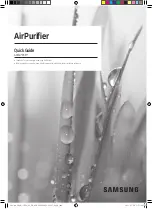
Flexi
-
Rooter 100
®
8
Hint:
Running water into the line while cleaning will help to flush
away debris and keep the shaft and tooling cooler by reducing heat
generated by friction.
OPERATION
Note:
It is helpful to use your sewer inspection camera as the same
time to help position the cutter at the stoppage and to monitor the
progress of the operation. Be sure to keep the camera at least
18” (.5m) back from the cutter to prevent damage to the camera in-
spection system.
Note:
The machine should always be operated with the motor set to
FORWARD
rotation. If necessary, the motor can be put into reverse
by turning the speed knob to release the trigger switch and pushing
the motor direction button toward the reel plate.
BEFORE OPEATING THE MACHINE, INSERT THE
CUTTER INTO THE PIPE.
ALLOWING THE CUTTER TO SPIN OUTSIDE THE
PIPE CAN BE VERY DANGEROUS.
OPERATING THE MACHINE AT EXCESSIVE SPEEDS
FOR LONG PERIODS OF TIME WILL PREMATURELY
WEAR DOWN TOOLING
AND POSSIBLY DAMAGE THE PIPE
1. Release the brake at the center of the reel.
2. Before stepping on the foot pedal, pull the flexible shaft and cutter
from the reel and slide it into the drain at least 12” down the line.
Allowing the cutter to spin outside the pipe can be very dangerous.
3. Make sure the motor is set to FORWARD rotation. Set the motor
rotation speed by adjusting the speed knob on the motor clamp.
The no load speed range is from 0 - 2400 rpm.
5. Turn the power switch ON. The switch should light up.While firmly
holding the flexible shaft with both gloved hands, step on the foot
pedal.
6. Guide the flexible shaft into the line with a firm even pressure. Do
not force the flexible shaft. Let the cutter do the work. You won’t
get the job done any faster and you could damage the shaft.
7. For the best cleaning operation, the rotation speed should be be-
tween 1000 and 2200 rpm depending on the resistance in the line
and type of stoppage. It is recommended to slow the rotation
speed down to help the cutter get around tight bends. Adjust the
speed to the level that works best for you.
8. If you are having trouble getting around a tight bend, push and
rotate the shaft at the same time at low speed. The shaft is flexi-
ble enough to negotiate several 90 degree bends.
9. It is helpful to push and release the foot pedal to help the chain
cutter navigate bends and seams in the pipe.
10. Use the ClogChopper penetrating head on its own or in combina-
tion with the chain cutters to punch through a complete blockage.
Then push and pull the spinning chain cutter though the area to
thoroughly clean the line. Use a sewer camera to monitor and
inspect your work.
11. If descaling the pipe, push the chain cutter past the area to be
cleaned, then pull the flexible shaft back though the area as you
flush the line with water for a more thorough cleaning job.
MOVE THE SHAFT AND CUTTER BACK AND FORTH
CONTINUOUSLY WHILE IN OPERATION.
LEAVING THE SHAFT TO SPIN IN THE SAME PLACE
FOR LONG PERIODS OF TIME COULD DAMAGE THE
OUTER SHEATH.
THE SAFETY SLIP CLUTCH IS THERE TO PROTECT
YOU FROM INJURY AND THE SHAFT FROM DAMAGE.
IT WILL SLIP IF THE CUTTER IS CAUGHT OR BEING
FORCED INTO THE STOPPAGE TOO QUICKLY. GO
SLOWLY AND LET THE CUTTER DO THE WORK. IF
THE FLEXIBLE SHAFT BEGINS TO BUCK OR TWIST,
STOP BY TAKING YOUR FOOT OFF OF THE PEDAL.
SEE THE CLUTCH ADJUSTMENT SECTION
IN MAINTENANCE SECTION TO MAKE ANY
NECESSARY ADJUSTMENTS TO THE CLUTCH.
OPERATION
SET-UP
1. Place the machine as close to the drain opening as possible to
help prevent the shaft from whipping and kinking.
2. Always lay the machine down
horizontally on the floor during
operation.
3. Position the air foot pedal for
easy accessibility. The machine
is designed for one person oper-
ation. Be sure you can quickly
remove your foot from the pedal
in an emergency.
4. Be sure the power switch is in
the OFF position.
5. Select the proper cutter for your application and secure it to the
shaft. See Cutter Application Chart and appropriate attachment
section.
MAKE SURE THE MOTOR SWITCH IS IN
THE ‘OFF’ POSITION!
12. After the job is complete, pull the flexible shaft out of the pipe and
wipe off the sheath as you guide it into the reel.
A disinfectant
spray can be applied to the cloth or sprayed directly onto the
sheath to help reduce contaminates.
Be sure to inspect the
flexible shaft and
sheath for wear and damage as you and re-
turned to the reel. Then use the reel brake to lock the reel and
keep it from rotating.






























